Career Paths
At the Austin Police Department, career opportunities are virtually limitless! We have multiple specialized units that police officers can apply for after serving four years on patrol. We also have a large number of investigative units where our detectives work night and day to solve cases on behalf of our citizens and visitors. See yourself in a management position? We offer promotions all the way up to the rank of Commander. At APD, there’s a dream job for everyone.
See the chart below to read about our rank structure, some of our specialized units, and opportunities for career advancement.
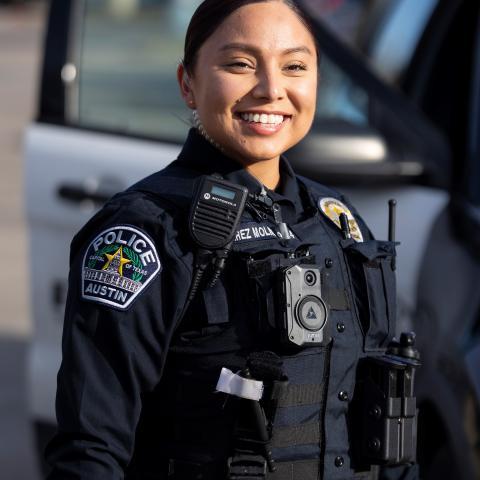
Probationary Police Officer
Upon graduation, all newly commissioned officers are referred to as Probationary Police Officers (PPO’s). As a PPO you will be assigned to a Field Training Officer (FTO) on a patrol shift for approximately 12–16 weeks where you’ll shadow the officer, work calls together, and ultimately be evaluated at the end of the training period. Upon successful completion of the Field Training period, you will graduate to Police Officer and will be assigned to a patrol shift where you’ll work four 10-hour shifts, with 3 days off. Newly commissioned police officers are on probation for 15 months following graduation (this includes the 12–16-week Field Training period).

Police Officer
Newly commissioned police officers are on probation for 15 months following graduation, and are assigned to a patrol shift with a schedule of four 10-hour shifts, and 3 days off. The officer’s days off will rotate every 28 days (shift change). Officers may transfer across patrol shifts or to other districts during this period (if vacancies exist) but must remain on patrol for at least 4 years before becoming eligible to apply for a specialized unit or to promote to the rank of Detective/Corporal. Below you’ll find a list of our specialized units:
SWAT Teams, Training Division, K-9 Unit, Tactical Intelligence Unit, Crisis Intervention Team, Dive Team, Critical Incident (Hostage) Negotiation Team, Police Technology Unit, Violent Crimes Task Force, Gang Unit, Firearms Unit, Real Time Crime Center, Austin Regional Intelligence Center (ARIC), Criminal Highway Interdiction (K-9), Air Unit, Bomb Squad, District Representatives, Highway Enforcement Unit, Commercial Vehicle Enforcement, Auxiliary Motorcycle Unit, Mounted Patrol, Recruiting Unit, Executive Protection Unit, Metro-Tactical Unit, Walking beat/Bicycle Patrol (downtown), and DWI.
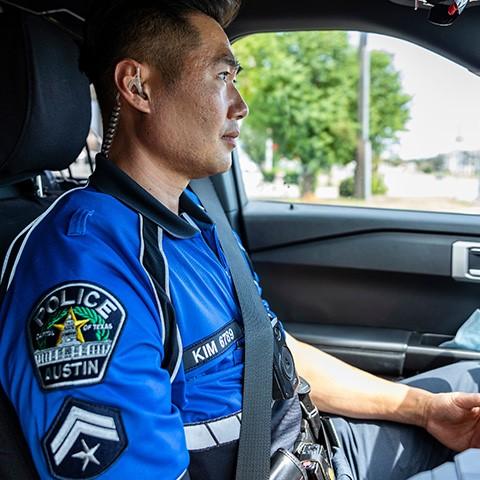
Corporal & Detective
After you’ve been commissioned for four years as a police officer you are eligible to promote to the rank of Corporal or Detective. All promotions up to the rank of Commander are made by passing a Civil Service examination for that rank. Candidates passing this exam are placed on an eligibility list which is active for 12 months. Anyone who was not promoted within that 12-month time frame must start over in the promotional process by retaking the Civil Service exam the next time it is offered. Detectives are frequently seen in civilian attire with their badge worn around the neck or at their waist, but sometimes do wear police uniforms. Both Corporals and Detectives can be identified by the two chevrons on their uniform sleeves. (A star below the chevrons indicates the individual has worked at APD for 10 or more years.)

Sergeant
After two years at the rank of Corporal/Detective you are eligible to promote to the rank of Sergeant. Again, you will study for and take a Civil Service exam and be placed on an eligibility list which is active for 24 months. Anyone who has not been promoted within those 24 months must start over in the promotional process by retaking the Civil Service exam the next time it is offered. Sergeants serve as supervisors and can be assigned to patrol or to a specialized unit (providing there are vacancies). Sergeants can be identified by three chevrons on their uniform sleeves.
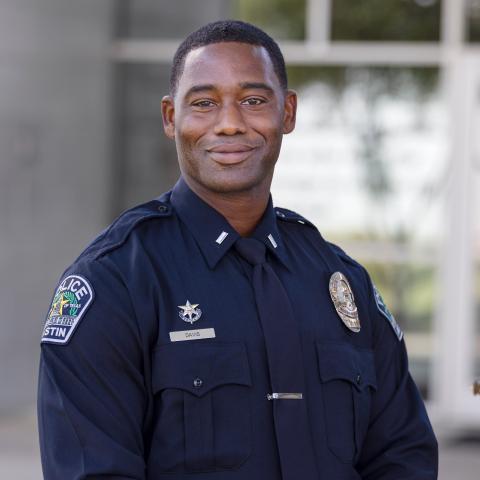
Lieutenant
After two years at the rank of Sergeant you are eligible to promote to the rank of Lieutenant. You will study for and take a Civil Service exam and be placed on an eligibility list which is active for 12 months. Candidates who were not promoted within that12 month time frame must start over in the promotional process by retaking the Civil Service exam the next time it is offered. Police lieutenants serve in a leadership capacity, supervising and managing entire units (ex: Recruiting Unit). Lieutenants can be identified by one bar worn on either side of the collars of their uniforms.
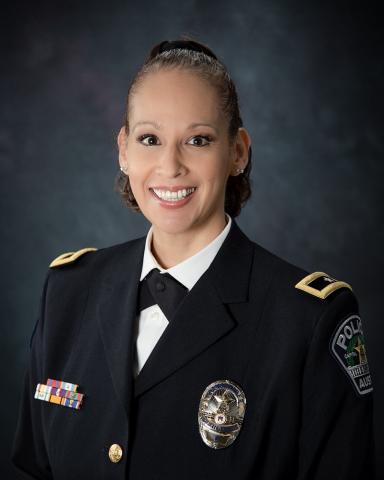
Commander
After two years at the rank of Lieutenant you are eligible to promote to the rank of Commander. You will study for and take a Civil Service exam and be placed on an eligibility list which remains active for 12 months. Anyone who was not promoted within the 12 month time frame must start over in the promotional process by retaking the Civil Service exam the next time it is offered. Commanders can be compared to civilian division managers. They’re responsible for managing entire divisions (ex: Training and Recruiting Division) to include day-to-day operations, staffing, business process changes, managing the division’s budget and authorizing spending, etc. Commanders report directly to an Assistant Chief. Commanders can be identified by a star worn on either side of the collars of their uniforms.
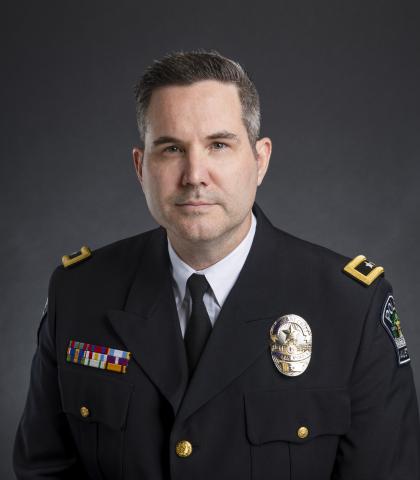
Assistant Chief
The rank of Assistant Chief is appointed by the Chief of Police. Generally, men and women at the rank of Commander are chosen to serve as Assistant Chiefs; however, there have been instances in which a Lieutenant was chosen and appointed to this rank. Assistant Chiefs are members of the Department’s executive team and are tasked with managing a number of divisions and units across the organization. Assistant Chiefs can be identified by the two stars worn on either side of the collars of their uniforms.

Chief of Staff
The Chief of Staff (currently Assistant Chief Robin Henderson) is a member of the executive team and works closely with the Chief of Police running day-to-day operations for the Department. A Chief of Staff can be identified by the three stars worn on either side of the collar of his/her uniform.
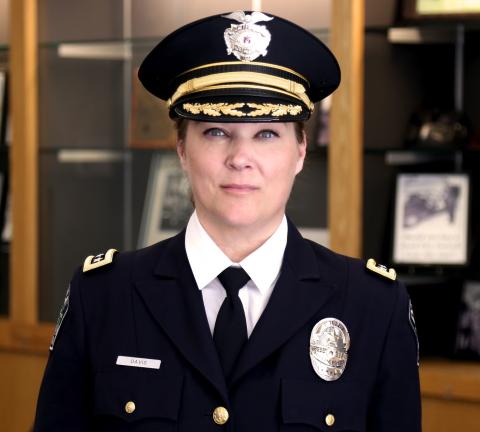
Chief of Police
The Chief of Police (currently Chief Lisa Davis) is appointed by the Austin City Manager and the appointment requires approval by members of the Austin City Council. The Chief of Police serves as the head of the organization and oversees all business operations for the department. The Chief works closely with City Council, City management, other chiefs (Fire, EMS), department managers, and public safety agencies to create a safer Austin.

